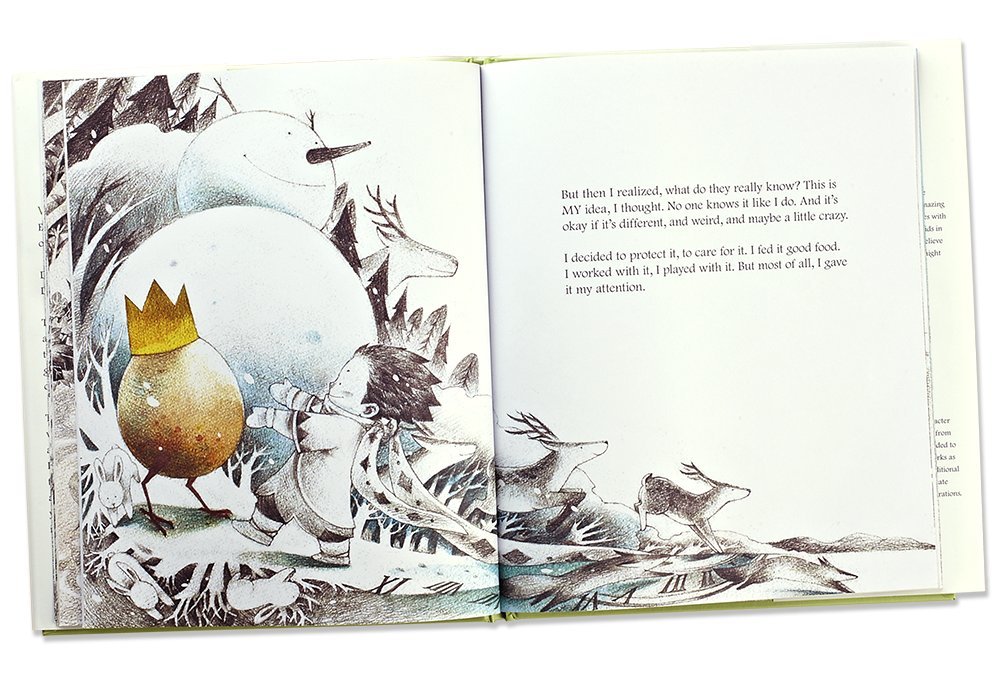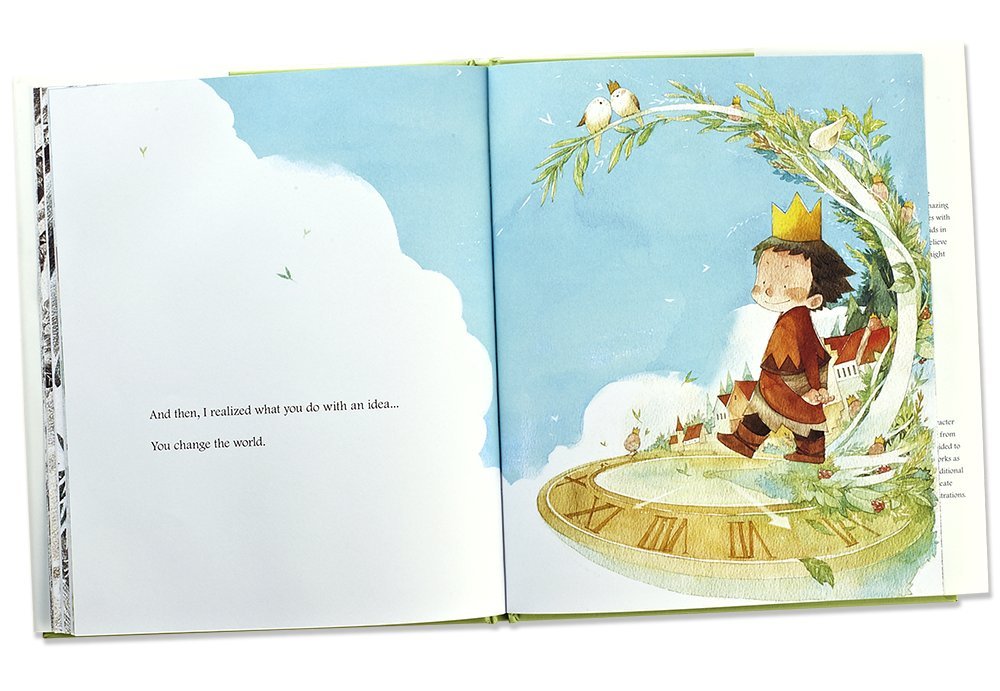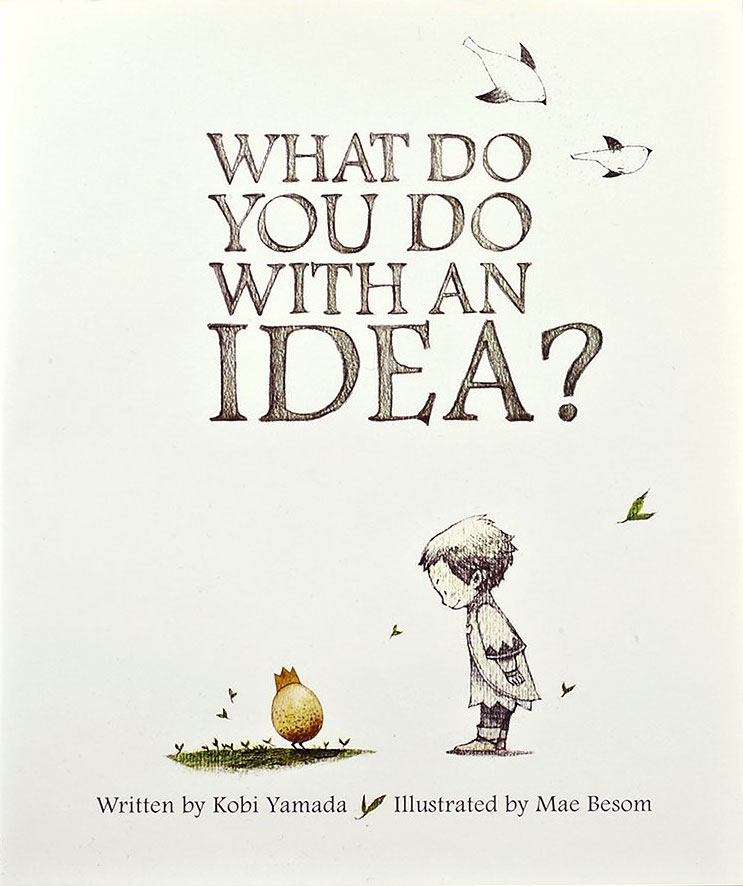What do you do with an idea?
A remarkable idea can come to you at any moment, but what would you do with it? An inquisitive boy in the story What Do You Do With An Idea? written by Kobi Yamada thinks that the remarkable idea that comes to him is as strange and fragile looking as an egg––an egg with legs and a crown on top! To the boy, the idea seems disparate and odd. In fact, he first walks away from it and pretends that it doesn’t belong to him. But his idea, unlike the grey world around him, glows with possibilities and follows him. What is the boy to do now? What will others say about his idea? Feeling uncertain, the boy pretends everything is the same within his drab world. Secretly, the boy knows everything is not the same since the appearance of his idea, because his idea is unique, and brings the boy more happiness than he has ever known before. With a lot of attention, the boy and idea grow together and become part of each other’s lives. Trouble arises, however, when the boy shows his idea to other people. They laugh at it, think it is an absolute waste of time, and claim that it will never amount to anything. The young boy needs to find the courage from within to accept and believe in the uniqueness and possibility of his idea.

What Do You Do With An Idea? prompts readers to immediately seek the answer because we often ask ourselves the same question about our own remarkable ideas. Yamada’s storytelling voice assumes the perspective of the young boy, whose inner reflections draw the reader into close relationship with his thoughts and feelings. Through his struggles we discover the answer to this all-important question which provides powerful wisdom and insight.
Illustrator Mae Besom utilizes the color grey to emphasize the ordinary and color to depict the extraordinary. Besom also integrates grey and color throughout the story and associates the bright colors with the brightness and endless possibilities of a special idea. She portrays a grey world of day-to-day realities that are at the same time filled with imaginable possibilities. Throughout selected pages in the story, Besom also uses a clock to symbolize time. These pages mark points in the story when the young boy spends an abundant amount of time on his idea causing it to grow and evolve over a period of time.

Children and adults will feel more comfortable about entertaining their own new ideas after reading this story, no matter how off-beat and off-track they might seem initially. One can believe that his or her special idea has merit too. What Do You Do With An Idea? encourages readers to have a positive outlook in order to try and give new ideas a chance. Most significantly, it reminds us that we empower our ideas to grow and to become everything possible as long as we remain resilient.
- Author: Kobi Yamada
- Illustrator: Mae Besom
- Age: 3 and up
- publisher: Compendium Inc. (February 1, 2014)
- 0.8. x 9.0 x 10.8:
- ISBN 10: 1938298071
- ISBN 13: 978-1938298073
Yamada and Besom team up to capture an abstract idea and make it conceivable to even the youngest readers. Young readers will come to appreciate the power of ideas and the resilience necessary to grow them. Also, they will experience the progression of an idea through rejection and acceptance which underscores the power of believing in one’s self. What Do You Do With An Idea? shares the importance of a wonderful idea and how it can impact not just us but everything around us. Best of all, young readers will learn that, too!




